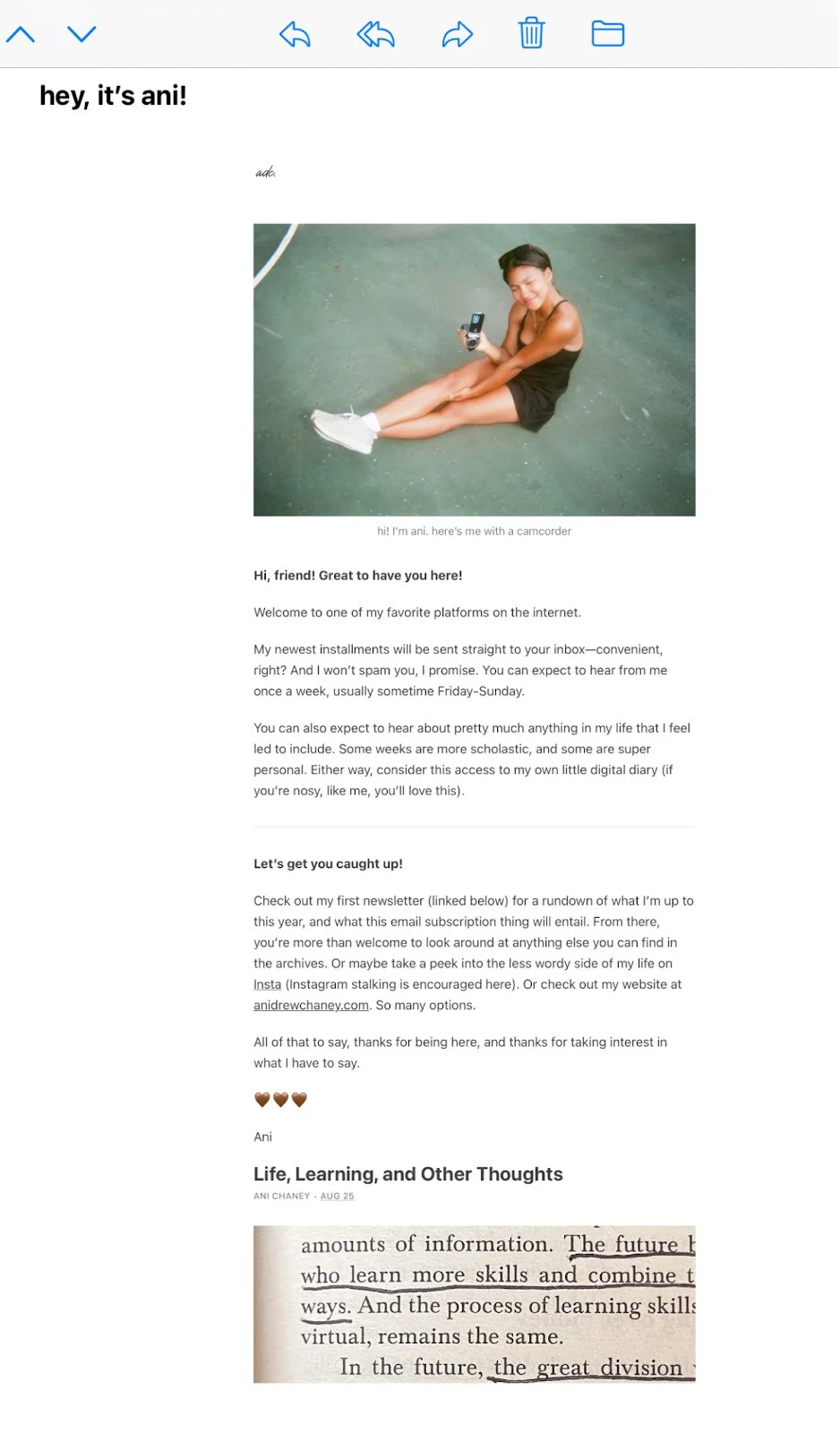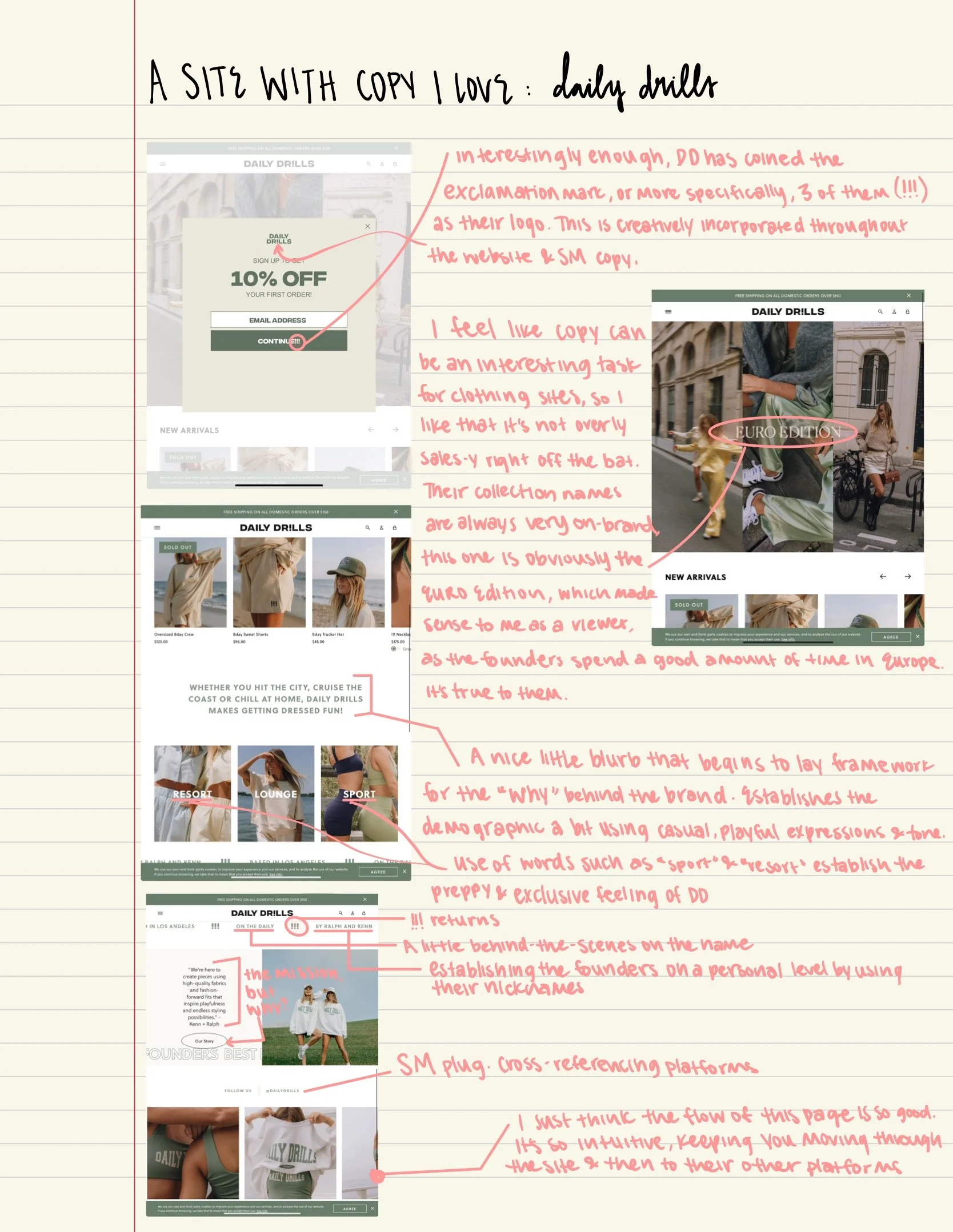How to Get People to Want What You Want Them to
I’ve spent the past month studying the art/skill/strategy of copywriting, and I’ve grown to be quite intrigued with its influence in pretty much every industry that exists. Here’s a landing page of sorts if you’re interested in what I did.
WEEK ONE
My first major takeaway from this module is that copywriting as a concept is less about the act of writing itself, and more about the psychology behind it. Obviously, copywriting takes writing skills. The most renowned copywriters are phenomenal writers and storytellers. But I’ve learned that their craft is rooted heavily in basic human psychology. Excellent copywriters are continually asking and answering this question: why do people want what they do, and how do I convince them (somewhat organically) to want the solution I’m giving?
Week one was generally content-heavy, just diving into some initial examples of great copy, internationally recognized campaigns, and the mechanics behind them all. My only major deliverable from this week was to copy (like, actually) this famous Rolls Royce ad from roughly 100 years ago. Kidding. Like 65. Instead of focusing too much on my own subpar handwritten version, I’ve attached my annotations on the real deal.
David Oglvy is the father of advertisement, so I’m told. It’s so eye opening to recognize so many strategic techniques in this ad that I never would have known to look for previous to this month.
WEEK TWO
My second week dove into Dave Gerhardt’s 10 Laws of Copywriting, which has proved to be an excellent resource amidst my early and limited experiences with copy. I’ve attached my first notes page containing the laws themselves, as well as a breakdown of that first law. Within each law, I was prompted to study various additional resources that supported that law. One of those was Maslow’s Hierarchy of Needs, which seems to be quite the celebrity among most marketing and advertising students.
I was also prompted to analyze welcome emails from newsletters I am subscribed to, and then use some of those elements to rewrite my welcome email copy for my own newsletter! I had created a pretty basic one back when I started the newsletter, but it’s nice to have a refresh; something a little more substantial and informative.
(Subscribe!)
WEEK THREE
My third week contained some more hands-on projects, such as re-writing old assignments while utilizing tools like Grammarly, the Thesaurus, and ChatGPT. I’m religiously on my Thesaurus app, so that one wasn’t new. Grammarly was a tool I used frequently in high school, so there was some familiarity there. But ChatGPT was definitely uncharted territory for me. I was honestly impressed with the results and how quickly they were generated. I think there is certainly a time and place for AI, especially in an era where we so frequently need new copy (i.e. daily social media posts), but I do think there is something to be said for the intentionality and strategy behind a human-created ad. There’s a level of personality there (in good copy, at least) that cannot be replicated by a computer.
Week 3 also included another opportunity to practice identifying copywriting laws and strategy within a website of choice. I chose to analyze the Daily Drills website, which is one of my favorite clothing companies. I’ve attached some annotations below.
I then went on to create my own simple advertisement for a local business. I chose one of my favorite vintage shops in downtown Indy, as it’s actually located in the building my grandma used to own a pizza shop in! Incredibly irrelevant information to this post, but so fun. Here’s the ad I created. I have mixed feelings on this (i.e. I hate it!), but I’ve attached it here anyways, lol.
WEEK FOUR
This brings us to my final week of the module. Week four assigned me the creation of a swipe file! I fully enjoyed this. I love looking through different ads, and I created mine on Pinterest, so it really didn’t feel like work. I think it’s clear the type of ads that I love, if you look through my file: Swipe File Board
To bring this landing page to a close, I’m sharing my top 5 takeaways from this month learning about copywriting. If you’re interested in knowing more of my opinions and thoughts surrounding these, I’ll be discussing them in my newsletter, linked here.
Professional writing does not equate to academic language. Informality prevents readers from tuning you out.
Copywriting is so much more than just the words written. It also has everything to do with the font, formatting, and placement of the ad.
Copy will look different for every business. Learn the voice of the company, and run with that. Give readers something to recognize.
Not all copy will be written down in history! It simply needs to do its job. It’s fun to really nail your vision, but that often takes years of experience, trial and error, and finding yourself stylistically.
People are nosy and selfish. We all are. Lean into that. People say yes when they feel informed and accommodated to.
That’s all I have! I hope this post was helpful or interesting or insightful in some capacity. Thank you for reading what I have to say!





